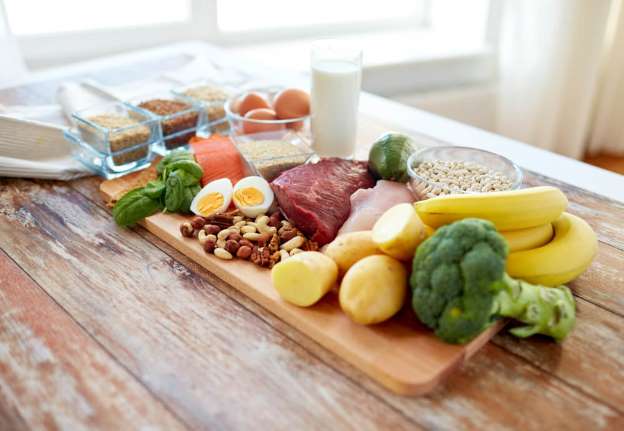The research is in: One in every three adult Americans has high blood pressure and only about 50 percent of those people have it under control.
The good news is that high blood pressure, also called hypertension, can be lowered or prevented simply by eating smarter. All it takes is focusing on foods high in potassium (hello, bananas!), magnesium, calcium and fiber, plus foods high in vitamins C and D.
Easy, right? It is. In fact, the DASH (Dietary Approaches to Stop Hypertension) diet was created specifically for its benefits in reducing high blood pressure. The eating plan is endorsed by the National Heart, Lung, and Blood Institute and many health and medical agencies because it works. And it works in just two weeks. Keep at it and you might drop some pounds, too, which also helps lower blood pressure. Here’s what you need to eat (and drink) to lower your blood pressure now.
Dairy products are good sources of calcium, an essential mineral linked to lower blood pressure. Six ounces of plain, low-fat yogurt contains 310 mg of calcium. Most adults need 1,000 mg per day. If you’re older than 50, aim for 1,200 mg per day.
Bananas
Yes, this fruit is often flaunted as the poster child for potassium because one medium banana contains about 425 mg of the nutrient (daily recommendation is 4,700 mg). Turn bananas into a frozen treat with this easy recipe for Raspberry-Banana Soft Serve.
Watermelon
It’s a fab fruit full of the potassium you need to lower blood pressure. It’s low in calories, too. Just a couple of wedges add up to 640 mg potassium.
Kale
It’s one of those super foods that has potassium and magnesium (both on the list of nutrients needed to lower hypertension) plus lots of vitamin C. And, of course, fiber. Here’s a simple way to prepare Steamed Kale. Other dark green leafy vegetables are great too. Think spinach, collard greens and Swiss chard. Your goal is to eat at least four to five servings of these a week.
Broccoli
This cruciferous veggie is a good source of three blood pressure regulating minerals: magnesium, calcium and potassium. Or go for broccoli sprouts, which are high in compounds that may reduce hypertension, cardiovascular disease and stroke. The sprouts also may help reduce artery damage, which may impact blood pressure.
Sesame and Rice Bran Oils
People who cooked with a blend of the two oils (look for them in health food aisles of major markets) saw a drop in blood pressure almost comparable to the decrease that results from taking medication, according to research presented at the American Heart Association’s Scientific Sessions. Researchers believe the effect is due to the oils’ fatty acids and antioxidants.
Green Tea
Scientists took a look at nine studies on green tea and found that drinking 2 to 3 cups of it daily resulted in an increase of arterial width. Wider arteries means the blood flows more easily through them and may result in lower blood pressure.
Wild Salmon
The omega-3 fatty acids in salmon are helpful in lowering blood pressure, according to Healthline.com. The American Heart Association suggests eating 3.5 ounces of salmon weekly. Other fish rich in omega-3s include salmon, herring and tuna. Pair this 18-minute Oven Roasted Salmon recipe with a Baby Kale Salad with Avocado Dressing for a dinner-sized dose of health.



